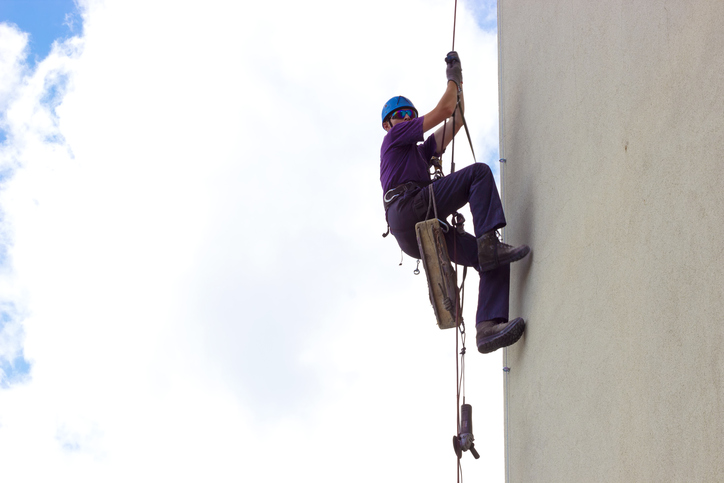It is imperative that you understand the risks that are inherent to your operation so that you can properly protect against them. It seems simple, but many accidents could be prevented each year by simply knowing what the risks are, and having a plan in place to protect your employees from them. Some of the worst claims are falls, so prevention of this exposure is critical.
Any time work is performed at a height of six feet or greater, falls and falling objects are a potential health and safety threat.
Handrails, guardrails, stairways, walkways and ladders are installed during the rigging up process for safety and easy access to other areas of the site. Though they provide ease of use, they also present hazards. To reduce your risk of injury:
- Use ladders that are in good repair and do not have missing rungs.
- Do not install stairs with missing or damaged steps. Instead, repair them before installation.
- Keep walkways clean and free of debris and tripping hazards.
- Use proper fall protection.
- Install guardrails prior to working in elevated areas.
In addition, you should also keep your fall protection system in good working order. To do so, inspect your equipment daily.
Webbing (body of belt, harness or lanyard)
- Inspect the entire surface of webbing for damage.
- Watch for frayed edges, broken fibers, pulled stitches, cuts or chemical damage. Broken webbing strands generally appear as tufts on the webbing surface.
- Replace according to manufacturer guidelines.
Buckle
- Inspect for loose, distorted or broken grommets. Do not cut or punch additional holes.
- Check belts without grommets for torn or elongated holes that could cause the buckle tongue to slip.
- Inspect the buckle for distortion and sharp edges. Carefully check corners and attachment points of the center bar.
- Check that rivets are tight and cannot be moved. Make sure the rivets are not bent.
- Inspect for pitted or cracked rivets that show signs of chemical corrosion.
Rope Lanyard
- Rotate the rope lanyard and inspect from end to end for fuzzy, worn, broken or cut fibers. Weakened areas have noticeable changes in the original rope diameter.
- The older a rope is and the more use it gets, the more important testing and inspection become.
Harness Hardware (snaps or “D” rings)
- Inspect hardware for cracks or other defects. Replace the belt if the “D” ring is not at a 90° angle and does not move vertically independent of the body pad or “D” saddle.
- Check bag rings and knife snaps to ensure that they are secure and working properly. Check tool loop rivets. Look for thread separation or rotting.
- Inspect snaps for hook and eye distortions, cracks, corrosion or pitted surfaces. The keeper latch should be seated into the snap nose without binding and should not be distorted or obstructed. The keeper spring should exert sufficient force to close the keeper firmly.
Inspect for cut fibers or damaged stitches inch by inch by flexing the strap in an inverted “U.” Note cuts, frayed areas or corrosion damage.Safety Straps
- Check friction buckle for slippage and sharp buckle edges.
Replace when tongue buckle holes are excessively worn or elongated.
Ensuring you have a safe work environment is critical to your overall Risk Management Plan. Your partners at iGO Michigan and The Larkin Group are here to help assist you with this and every other aspect of your risk management and insurance program.
For further assistance, contact Adam Maas today at amaas@larkingrp.com or directly at 231-944-7612.

